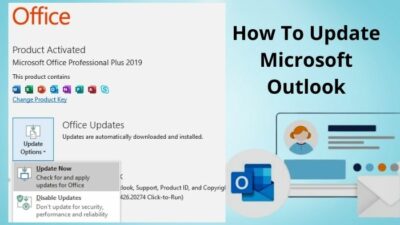Are you bored of getting popups notifications that a Java update is available to appear whenever you turn on your Microsoft Windows system?
If your answer is yes and if it’s annoying, don’t worry. You have in the right place, then.
Today, in this post, I will teach you why you keep the java update popup messages and how you stop the java update popup on your Windows 10.

Don’t miss any part and carefully follow the instructions.
So, let’s get started.
Why Does Java Update Keep Popping Up?
Java is a powerful high-level Windows feature. When you install java into your system, Java Update helps to keep your machine updated regularly with the most recent Java versions.
When auto-update is turned on, your system regularly scans for new Java releases. If a new release java version is available, it shows a popup message to users to ask for permission to update the java.
Java shows popups notifications that a new update is available to appear whenever you boot your Windows system until you update the latest version. You have the option of setting a schedule for checking for updates or manually checking at any time.
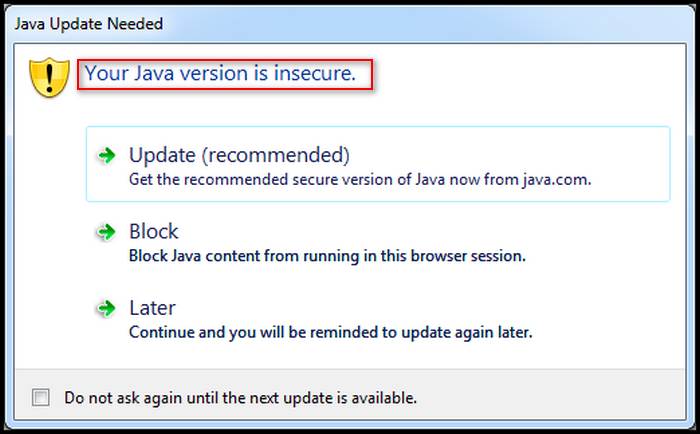
You can also permanently disable the Java update popup messages if you don’t want to see them. So, follow the next section to know how you stop java update popup messages on your system.
Check out the easiest way to fix Discord not working with audio interface.
How To Stop Java Update Popup On Windows 10
If your Java auto-update is turned on, your system regularly scans for new Java releases shows a popup message to users to update the java. Every time you turn on your Microsoft Windows system, it shows a popup message until you finish updating your java.
It’s very annoying to see too much of the same notification. You need to update your Java application or turn off your Java notification manually to solve this problem.
If you don’t need to update your java application and don’t want to see the update notifications, follow some methods to keep turning off the Java update notification.
Here are the steps to stop Java update popup on Windows 10:
1. Use Java Control Panel
The Java Control Panel can use to turn off the Java notification pop-ups. There is a setting in the Java Control Panel that disables Java update notifications. However, for new update settings to be saved, you may need to visit the Java Control Panel as an administrator.
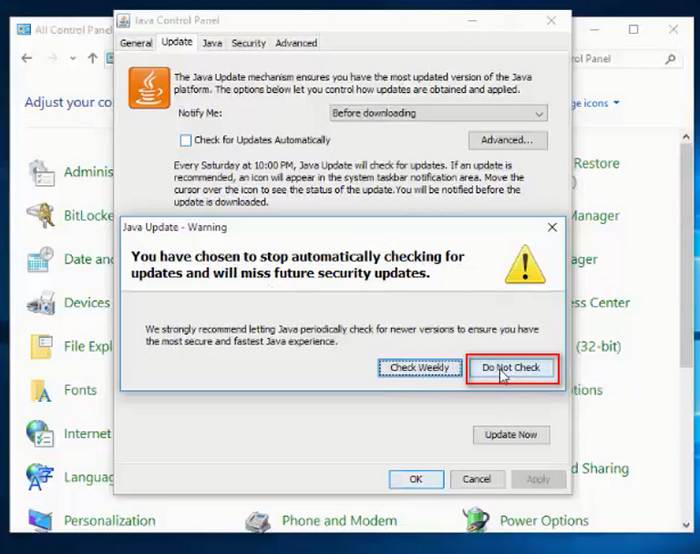
Follow these steps to turn off the Java update pop-ups on Windows 10:
- Click on the Windows icon on the bottom-left side of the screen to open the Start menu or,
- Press Windows Key on your keyboard to open the Start menu.
- Type Configure Java and then click on Configure Java icon in the search result to open the Java Control Panel.
- Go to the Update tab.
- Uncheck the Check for Updates Automatically options in the center of the Java Control Panel window.
- Choose Do Not Check when the prompt window will appear on the screen.
- Click on Apply to save the changes.
- Click Ok to finish the settings.
Another way to open the Java control panel is:
- Click on the Windows Start icon to open the Start menu or,
- Press Windows Key on your keyboard to open the Start menu.
- Type Control Panel and then click on the Control Panel icon in the search result to open the Control Panel.
- Choose Large icons on the View option on the top-right side of the screen.
- Find out Java in the control lists.
- Click on Java to open the Java Control Panel and follow the following steps that I described earlier.
After you turn off the check Java update automatically, Java will no longer check for updates, and the update popup message will no longer appear on your Windows system screen.
Check out the easiest way to Fix Discord Airpods Not Working.
2. Use Windows Registry
You can disable Java Update Available notifications by editing the registry. The Windows Registry is an essential component for your Microsoft Windows operating systems.
Windows and your apps both use information from the Registry. It can help the operating system manage the computer, assist programs in utilizing the computer’s resources, and serve as a repository for custom settings made in Windows and applications.
To disable the Java update popup message, first, you need to know what bit of Windows Operating system you use, like 32 bit or 64 bit, because the Registry feature differs between those two versions.
So,
How I use Windows Registry to disable the Java update popup messages?
Follow these steps to disable the Java update popup messages:
For 64 Bit:
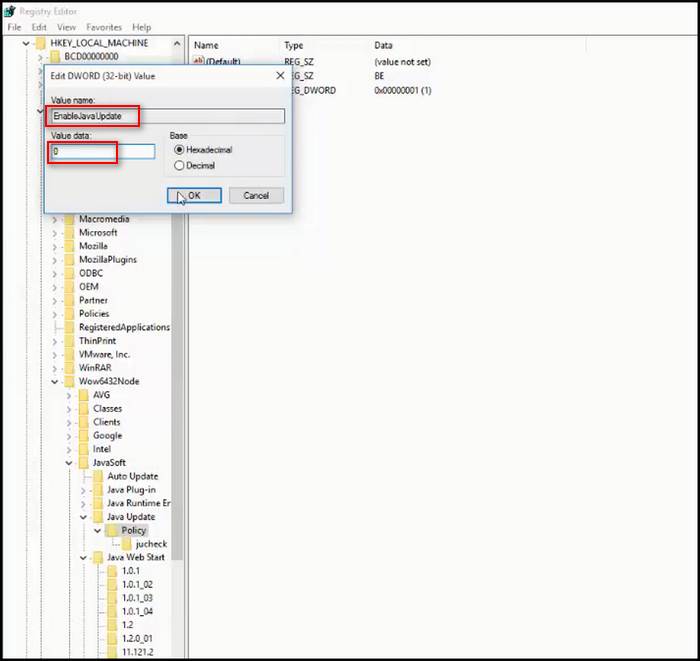
Follow the steps below to turn off the Java update pop-ups on 64 bit Windows 10:
- Press Windows Key + R on your keyboard to open the Windows Run program.
- Type regedit and press the Enter button to open the Registry Editor.
- Navigate to HKEY_LOCAL_MACHINE\SOFTWARE\WOW6432Node\JavaSoft\Java Update\Policy
- Click on EnableJavaUpdate to edit DWORD Value.
- Enter the value 0 in the Value data field.
- Click on Ok to save the changes.
- Open Task Manager and go to the Startup tab.
- Find out Java Update Scheduler and select it.
- Click on Disable button to stop the update popup message.
For 32 Bit:
Follow the steps below to turn off the Java update pop-ups on 32 bit Windows 10:
- Press Windows Key + R on your keyboard to open the Windows Run program.
- Type regedit and press the Enter button to open the Registry Editor.
- Navigate to HKEY_LOCAL_MACHINE\SOFTWARE\JavaSoft\Java Update\Policy
- Click on EnableJavaUpdate to edit DWORD Value.
- Enter the value 0 in the Value data field.
- Click on Ok to save the changes.
- Open Task Manager and go to the Startup tab.
- Find out Java Update Scheduler and select it.
- Click on Disable button to stop the update popup message.
Now, in Windows 10, you’ve successfully disabled the java update notification.
Note: The value 1 means Enabled, and 0 means Disabled. If you enter the value 0, that means you disabled the java update notification. If you again want to enable the java update notification, you enter the value 1 in the Value data field.
Check out our epic guide on how to fix Discord rich presence not working.
How To Stop Java Update Popup On MacOS
Java application is also used on the macOS platform. Like Windows 10 operating system, Java also shows update popup messages on macOS devices. That situation is also annoying for macOS users.
So if you are a macOS user, you can also stop Java update popup messages. There are two ways to stop Java update popup messages on macOS. These steps are discussed below.
Here are the steps to stop Java update popup messages on macOS:
1. Use Java Control Panel
Java notification pop-ups can be turned off using the Java Control Panel. The Java Control Panel has a setting that blocks Java update notifications. So, for new update settings to be saved, you need to open the Java Control Panel.
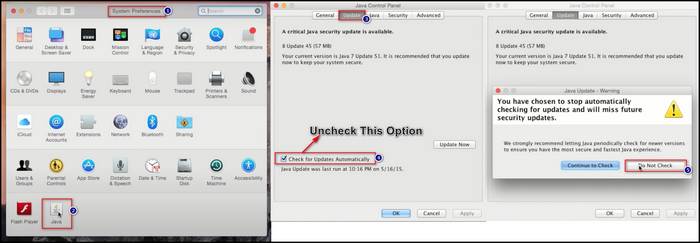
Follow these steps to turn off the Java update pop-ups by using Java Control Panel:
- Click on the Apple icon to open the System Menu.
- Choose System Preferences.
- Click on the Java icon to open the Java Control Panel.
- Go to the Update tab.
- Uncheck the Check for Updates Automatically options in the center of the Java Control Panel window.
- Choose Do Not Check when the prompt window will appear on the screen.
- Click on Apply to save the changes.
- Click Ok to finish the settings.
When you turn off the automatically Java update checking feature, Java will no longer check for updates, and the update popup message will no longer appear on your macOS system.
2. Use The Terminal
You can also use the MacOs terminal to disable the Java update pop-ups messages. To turn off the Java update pop-ups on MacOS by using the terminal, follow these steps:
- Click on the Search icon on Mac’s menu bar to open Spotlight.
- Type Terminal and click on the search result to open Terminal.
- Enter sudo defaults write /Library/Preferences/com.oracle.java.Java-Updater JavaAutoUpdateEnabled -bool false commands.
- Hit the Return button to disable the Java update.
How To Remove Install Java Update Popup Scam
Sometimes, your browser shows a fake alert message that you need to update Java. This alert message indicates that your browser is affected by malware or viruses.
You can use some methods to remove the Install Java update popup scam. These methods are effective in removing all kinds of malware and viruses on your computer.
Also, check out how to fix discord screen share no audio on Windows 10.
Here are the steps to remove the popup scam on your computer:
1. Uninstall The Malicious Programs
Malware or viruses installed on your computer is most likely to blame for this pop-up ad. These malware programs come with other free software that you can get from the Internet, and you may discover that you have unintentionally installed malware.

So, if you want to remove the malware or viruses on your computer, you need to uninstall the malicious programs. To remove the malware or viruses on your computer, follow these steps:
- Click on the Start menu icon on the bottom-left side of the windows screen. Or,
- Press Windows Key on your keyboard to open the Start menu.
- Type Control Panel and click on the search result to open Control Panel.
- Select Uninstall a program under the Programs section.
- Find out the malicious program in the program lists.
- Select the malicious program.
- Right-click and choose Uninstall.
- Wait some minutes to complete the uninstall process successfully.
- Restart your computer if needed.
I hope this method solves your popup scam problems. After successful uninstall and restart your computer, check whether your problem is solved. If not, then follow the next following solution.
Also, check our exclusive tutorial on Airpods Not Working with Microsoft Teams
2. Reset Your Browser Settings
When your browser is affected by spyware, malicious or viruses, your browsing behavior changes. If you click to open on the tab, it will open another tab automatically, where you will see the Install Java Update tab.
These kinds of browser behavior are so much annoying and frustrating for users. To solve this problem, you can reset your browser settings. This method helps you to solve your problem quickly and effectively.
Here I will show you how you reset your Chrome browser settings as an example to solve scam issues. Though all browser reset systems work similarly, it is a bit different.
So,
How do I reset my browser settings?
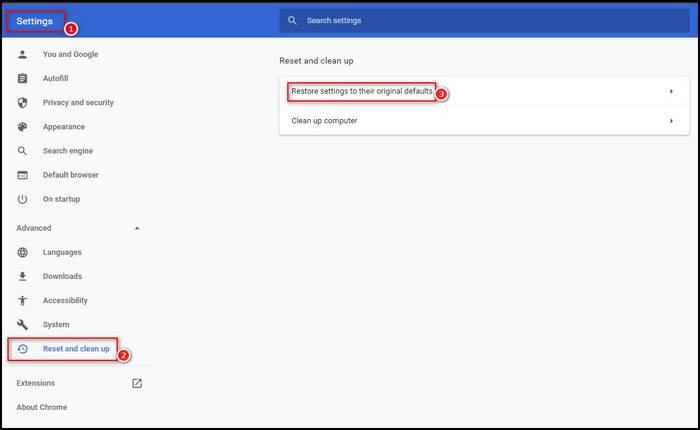
Follow the steps below to reset your browser settings:
- Open your Chrome browser.
- Click on the three-dot icon on the right side corner of the screen.
- Select and open Settings.
- Click on the Search box or icon on the top of the browser screen.
- Type reset to find out the Reset and clean-up options.
- Select Restore settings to their original defaults option.
- Click on the Reset settings button to make your browser settings default.
- Close the browser.
- Relaunch your Chrome browser.
After reopening your browser, now you check whether your issue is solved. I hope this method can help you to solve your popup scam.
Have some time to spare? Check out our latest fix for Airpods Not Working in Zoom on Mac.
Final Thoughts
It’s very annoying to see too much of the same notification. When your Java auto-update is turned on, your system regularly scans for new Java releases shows a popup message to users to update the java. Every time you turn on your system until you finish updating your java.
To solve this problem, you need to turn off your Java update popup messages manually. You can use Java Control Panel or Windows Registry program to disable the Java update popup messages. If you are a macOS user, you can also disable the Java update popup messages using Java Control Panel and Terminal.
Let me know in the comments which method you use to disable your Java update popup messages and share this post with your friends who need it.

